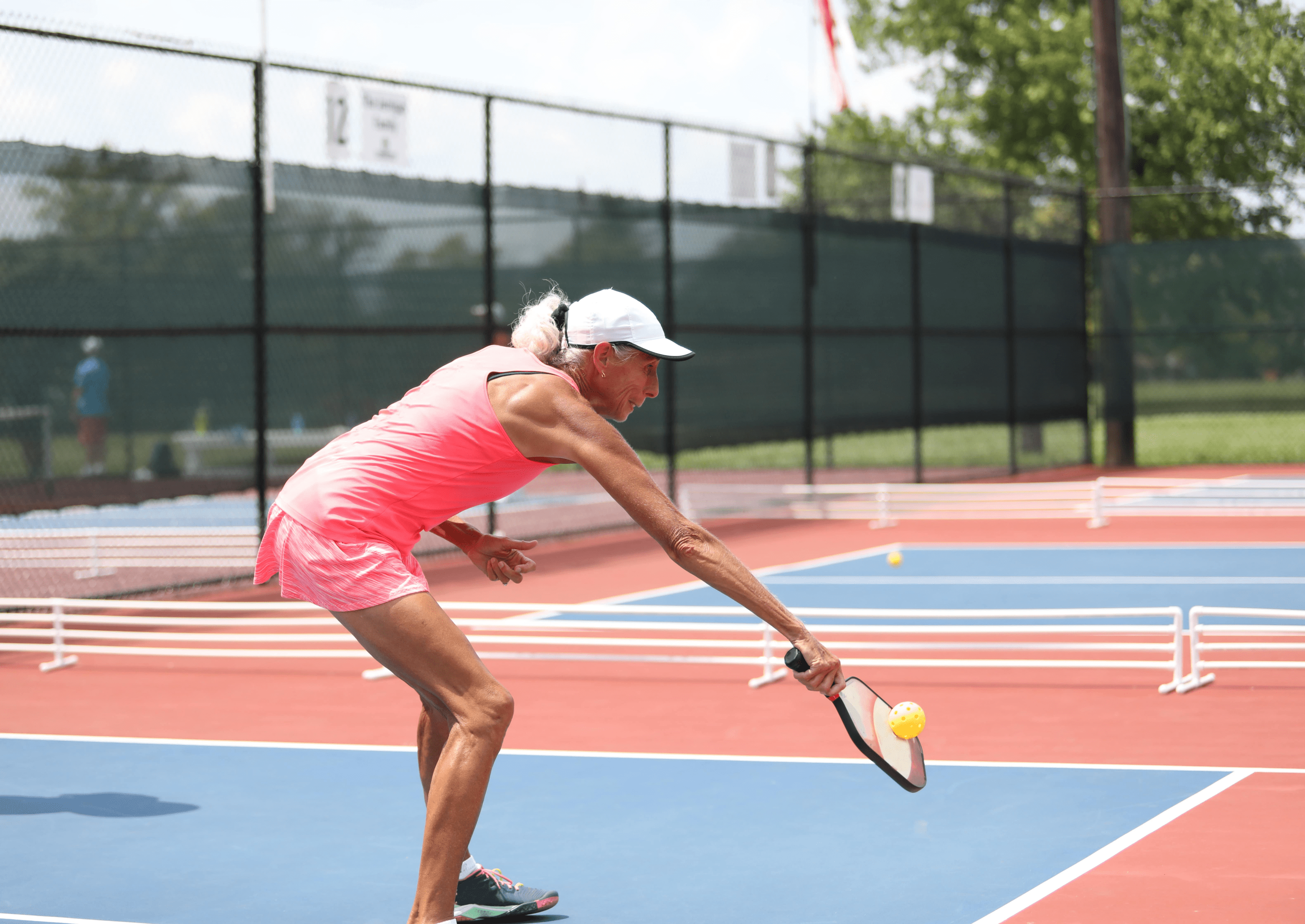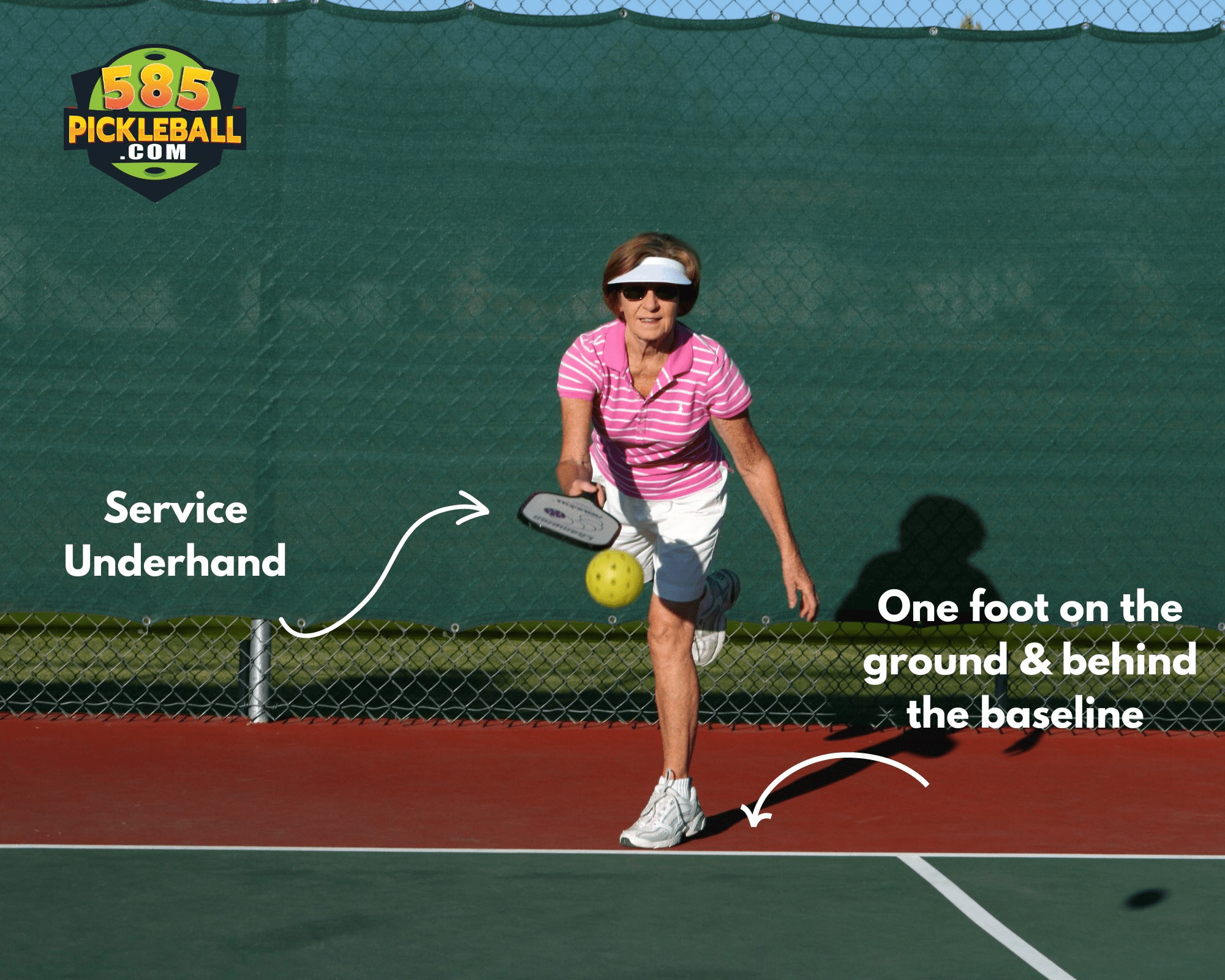Are you tired of constantly arguing with opponents about whether a shot was in or out? If so, it’s time to brush up on your knowledge of the faults in pickleball. Knowing the fault rules can make the difference between winning and losing matches, so it’s essential to learn them properly.
In this post, we cover the fault rules in pickleball and how to use them to your advantage.
Table of Contents
ToggleWhat is a Fault in Pickleball?
A fault happens when specific rules are broken, becomes a dead ball, and the gameplay ends. The player or team that violates the rules loses the rally but doesn’t necessarily win the point.
The most common faults occur when a serve doesn’t land within the lines of the receiving court. A player hits the ball in the net or out of bounds. Lastly, either side volleys their shot before the ball bounces on each side of the court, known as the double bounce rule.
Let’s go through all the scenarios where faults occur, giving you a better understanding.

What Causes a Fault in Pickleball?
There are quite a few ways a fault can happen in pickleball; I will be as concise as possible. Check out the official rule book for a more in-depth look.
- The Bounce Rules – The ball must bounce on each side of the court before playing volleys. A volley is hitting the ball out of the air without the ball bouncing first. Also, allowing the ball to bounce twice on the same side of the court is a fault.
- Hitting The Ball Into The Pickleball Net – If the ball is hit and fails to go to the opposing side, it’s a dead ball and a fault. In addition, the ball can’t be hit under the net or between the post and the net.
-
The Non-Volley Zone – Following the non-volley zone rules can confuse beginners. Here’s the gist: Don’t hit the ball out of the air while standing in the zone. Avoid foot faults, which occur when your feet or shoes are on the lines of the non-volley zone. Read our dedicated blog post for an in-depth breakdown of the Kitchen rules.
SERVICE
-
-
Service Faults – You should know these three service faults like the back of your hand. Always stand behind the service line; avoid service foot faults by having one foot on the ground when serving. Serve underhand in an upward motion to prevent a service fault. Always hit the ball to the diagonal service court of the opposing team, and the ball bounce must land beyond the non-volley zone line.
-
-
-
Hitting A Permanent Object – If a pickleball hits a permanent object — like a bench, fence, the referee, or net post, It is a fault. If your body, apparel, or paddle touches the pickleball net post or net. In addition, you can only hit the ball after it passes over the net.
-
-
-
Hitting The Ball – You can’t hit the ball with anything other than your paddle. Also, avoid intentionally catching or carrying the ball with your paddle and a double hit, as you will cause an automatic fault.
-
-
-
Calling A Let On The Serve – This may require adjusting if you have a tennis background. A let is only valid during regular gameplay and bounces within the court lines. Make sure to avoid calling a let on the service because it’s a rule violation.
-
As you can see, there are many ways to commit a fault within the game’s rules. Make sure to brush up on all the rules in the official rule book.
Calling Faults on the Pickleball Court
When calling a fault in pickleball, it is crucial to be attentive and observe the rules diligently. The fault that occurs will ultimately decide who wins or loses the point at stake. Calling faults in pickleball can be a tricky task, especially for beginners. It’s important to remember that the fault rules must be adhered to for the game to remain fair and fun for everyone.
Calling faults in pickleball is a vital part of the game and requires attention to detail. It’s important to remember that all faults need to be called as they happen. Before calling a fault, paying attention to the court lines and location is important. For example, the serving team doesn’t call a line rule fault on the opposite side of the court. Calling faults is the responsibility of the receiving team and should be done as soon as possible.
Players also need to know when not to call a fault. For example, a let on the service is not valid but is during regular gameplay and bounces within the court lines.
In summary, calling a fault in pickleball requires quick decision-making and knowledge of all the rules. Pay attention to where the team is standing and if there are any violations taking place.
What Happens When the Server Faults in a Singles Game in Pickleball?
When the server in a singles game faults, there is no point awarded, and the other player receives the serve. All players only get one shot to serve, unlike tennis, when players get two attempts at hitting the ball over the net.
As we mentioned above, specific rules must be followed with each serve. The player must stand behind the baseline and keep one foot on the ground when serving. The serve must go diagonally to the other side of the court, and it cannot hit any permanent objects before passing over the net. The server will not receive any points if they commit a fault.
After you strike the pickleball, you may step into the pickleball court on the baseline or outside the imaginary extensions of the sideline or the center line.

What Happens When the Server Faults in a Doubles Game in Pickleball?
In a doubles game, the serve is rotated clockwise between two teams. When the first server faults in a doubles game, the serve goes to the next team member. Again no points are awarded if both players fault and the serve goes to the opposing team. The players must switch sides of the service area after every completed volley and rotate after a fault. Only the serving team can score points.
What Happens When the Receiver Faults in Pickleball?
A fault occurs when a player violates one of the game’s rules. If the receiver faults during a point, the following can happen:
-
-
The server gets the point if the receiver faults on their serve. The server gets to serve again on the other side of their court.
-
-
-
The server gets the point if the receiver faults on any other shot during the point. The server then gets to serve again, and this continues until the server commits a fault.
-
It’s important to note that a fault can occur at any time during the point, not just when the receiver is serving. For example, if the receiver hits the ball out of bounds, hits the ball into the net, or fails to return the ball over the net, they will have committed a fault.
What is a Foot Fault?
A foot fault occurs when a player steps on or over the non-volley zone line when volleying or service area lines when serving. We talk more in-depth about the Kitchen rules in our full post, but one rule to note.
A player or anything the player is wearing or carrying touches the non-volley zone or touches any kitchen line a fault occurs. When the server’s feet touch the backcourt line while serving, this is a rule violation and a foot fault.
Players are not allowed to volley the ball while standing inside the non-volley zone (the area within 7 feet of the net on either side of the center line). However, they can enter the non-volley zone anytime and hit the ball after it bounces from this area.
Wrapping up
In conclusion, calling a fault in pickleball is essential to the game. Knowing when to call and not to call a fault on your opponent can be difficult if you are unfamiliar with the rules. When playing singles or doubles games, it’s essential to keep track of who is serving and what side they are serving from so that any faults can be called immediately.
A foot fault occurs when someone steps into the non-volley zone or service area lines while volleying or serving. Overall, understanding how to call fouls during pickleball properly will give players more confidence and help them stay within the boundaries of fair play.
Hopefully, we have given you more insights into the rules around faults. Let me know if you have any questions in the comments below!

